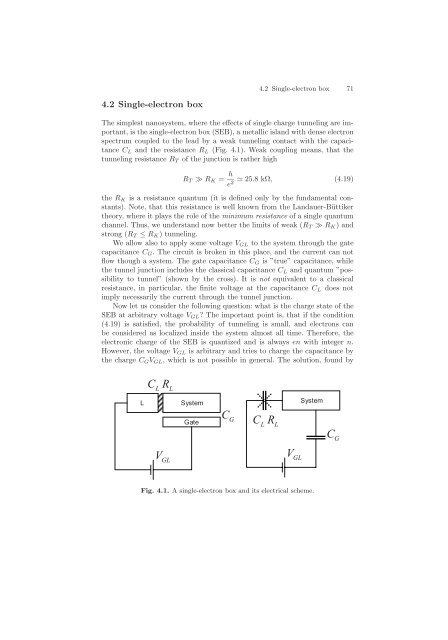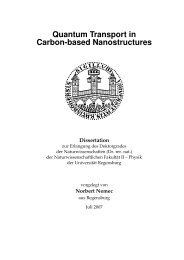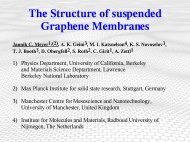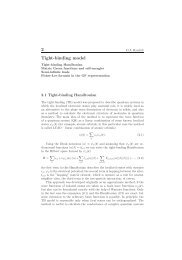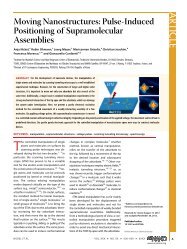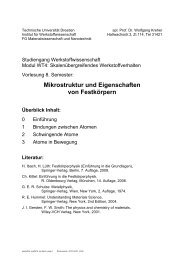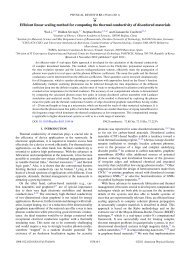4 Coulomb blockade
4 Coulomb blockade
4 Coulomb blockade
Create successful ePaper yourself
Turn your PDF publications into a flip-book with our unique Google optimized e-Paper software.
4.2 Single-electron box<br />
4.2 Single-electron box 71<br />
The simplest nanosystem, where the effects of single charge tunneling are important,<br />
is the single-electron box (SEB), a metallic island with dense electron<br />
spectrum coupled to the lead by a weak tunneling contact with the capacitance<br />
CL and the resistance RL (Fig. 4.1). Weak coupling means, that the<br />
tunneling resistance RT of the junction is rather high<br />
RT ≫ RK = h<br />
25.8 kΩ, (4.19)<br />
e2 the RK is a resistance quantum (it is defined only by the fundamental constants).<br />
Note, that this resistance is well known from the Landauer-Büttiker<br />
theory, where it plays the role of the minimum resistance of a single quantum<br />
channel. Thus, we understand now better the limits of weak (RT ≫ RK) and<br />
strong (RT ≤ RK) tunneling.<br />
We allow also to apply some voltage VGL to the system through the gate<br />
capacitance CG. The circuit is broken in this place, and the current can not<br />
flow though a system. The gate capacitance CG is ”true” capacitance, while<br />
the tunnel junction includes the classical capacitance CL and quantum ”possibility<br />
to tunnel” (shown by the cross). It is not equivalent to a classical<br />
resistance, in particular, the finite voltage at the capacitance CL does not<br />
imply necessarily the current through the tunnel junction.<br />
Now let us consider the following question: what is the charge state of the<br />
SEB at arbitrary voltage VGL? The important point is, that if the condition<br />
(4.19) is satisfied, the probability of tunneling is small, and electrons can<br />
be considered as localized inside the system almost all time. Therefore, the<br />
electronic charge of the SEB is quantized and is always en with integer n.<br />
However, the voltage VGL is arbitrary and tries to charge the capacitance by<br />
the charge CGVGL, which is not possible in general. The solution, found by<br />
L<br />
CLRL VGL<br />
System<br />
Gate<br />
CG<br />
CLRL VGL<br />
System<br />
Fig. 4.1. A single-electron box and its electrical scheme.<br />
CG


